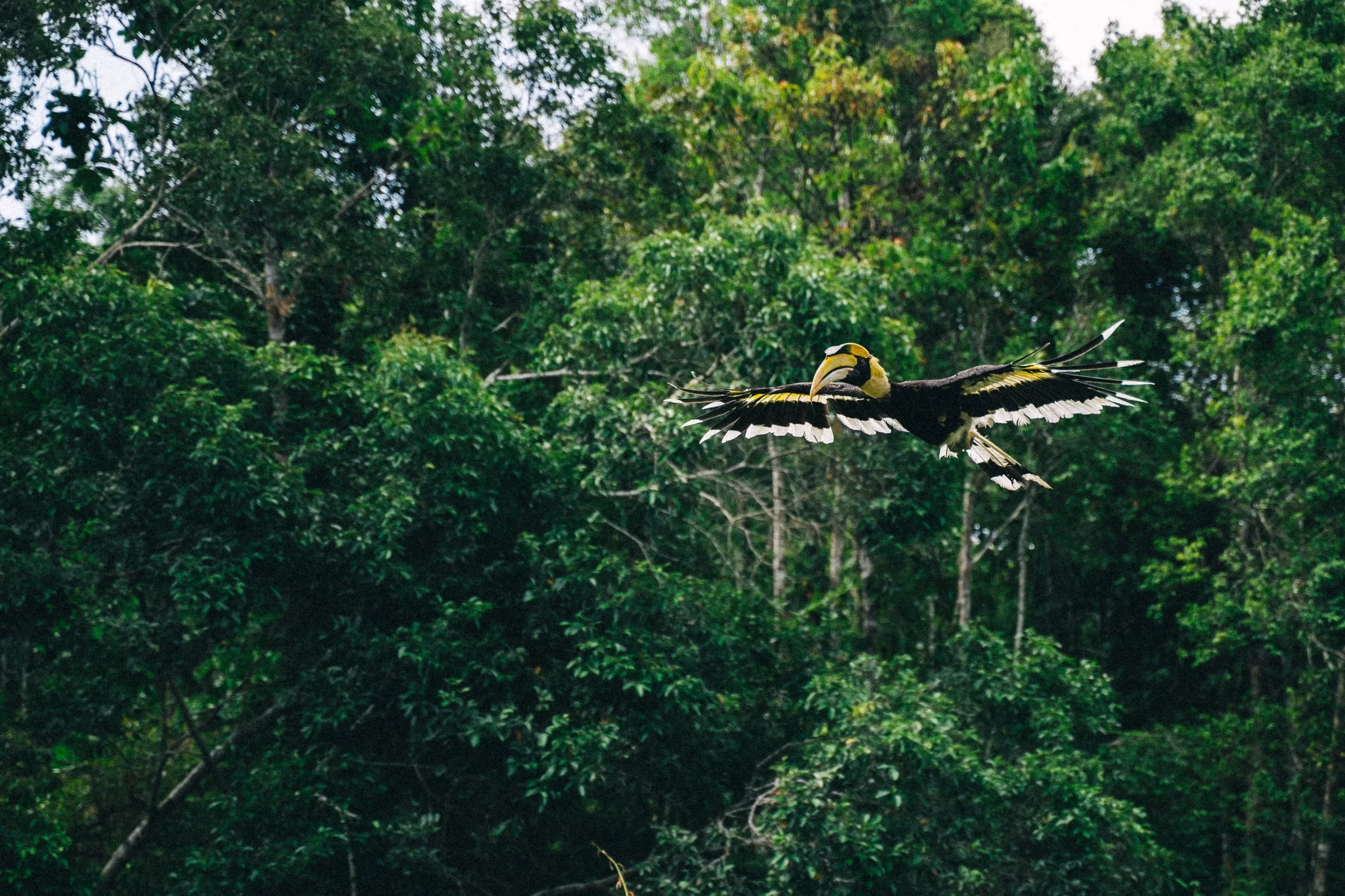Birding in Kerala is an unforgettable experience, as the state is home to more than 350 breeding birds including some endangered birds in India that can be found nowhere else. Additionally, more than 550 birds in Kerala have been observed, giving it the 8th-highest species total out of the states in India. Overall, the state ranks first in the total number of checklists submitted to eBird for any Indian state, meaning that it’s easy to find birding friends in Kerala!
The state is home to a diverse array of habitats, from rolling hills and ravines to damp, humid rainforests. However, Kerala is somewhat limited in that it is smaller compared to much larger states like Maharashtra. No matter, the tremendous ecosystem variety that Kerala possesses makes the Land of Coconut Trees home to many bird species.
Although Kerala is a paradise for birds, millions of people consider the state to be an ideal place to live. This has led to nearly half of Kerala becoming urbanized, leading to regional declines in bird populations.
Nevertheless, Kerala is still an excellent place to go birding. Whether you’re planning to take a trip to Kerala or just hoping to familiarize yourself with common Kerala birds, this guide will help you to confidently identify the species that you see. Continue reading this list of birds in Kerala with photos if you’re ready to become a confident Kerala birder!
Table of Contents
16 Common Birds In Kerala
The following birds are the 16 most common birds in Kerala—regardless of the time of year. Therefore, those visiting Kerala have a good chance of detecting all of these birds. Keep in mind that all of the percentages that I include with the species are subject to change, but they will give you a good idea of the abundance of these species. Read on as I explain the behaviors and preferences of these Kerala birds.
House Crow
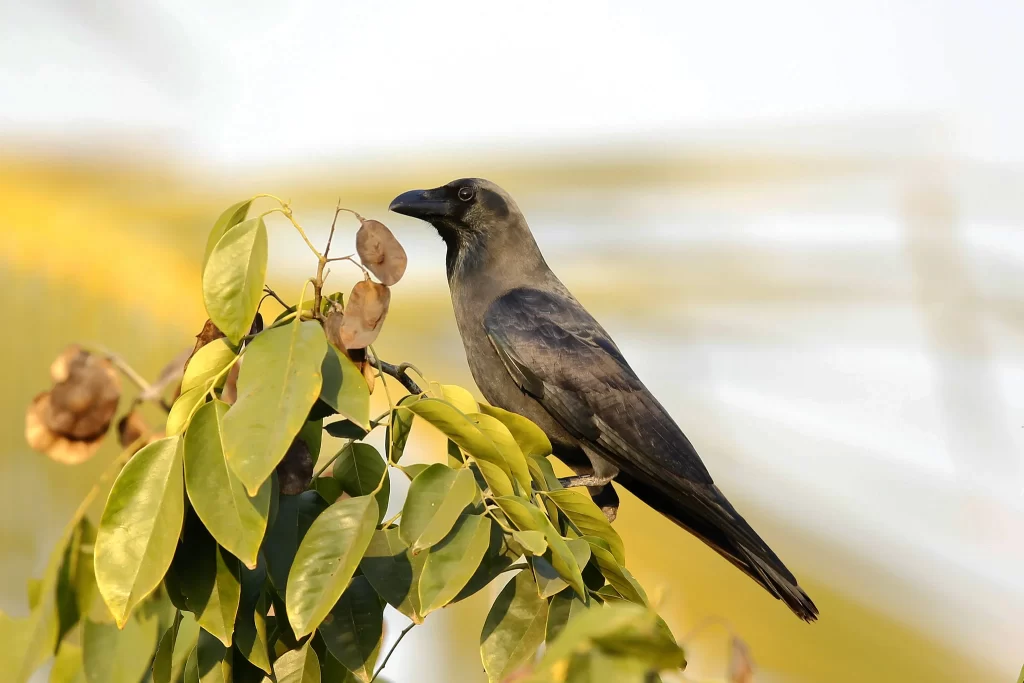
The House Crow is the only bird in Kerala that is observed on more than 50% of the checklists submitted to eBird, as 50.18% of all Kerala checklists feature this species. This makes House Crows the most common of the different types of birds in Kerala.
The abundance of House Crows should be no surprise, as these Kerala birds have adapted well to living among humans. Therefore, these corvids thrive in urban areas where they take advantage of the abundant food resources available to them.
Although they are abundant, House Crows are prettier than most other crow species with their grayish undersides and glossy black faces and backs. These creatures eat similar diets compared to other corvids. Therefore, human food scraps, insects, seeds, fruits, small mammals, reptiles, and other birds may be on the menu.
White-cheeked Barbet
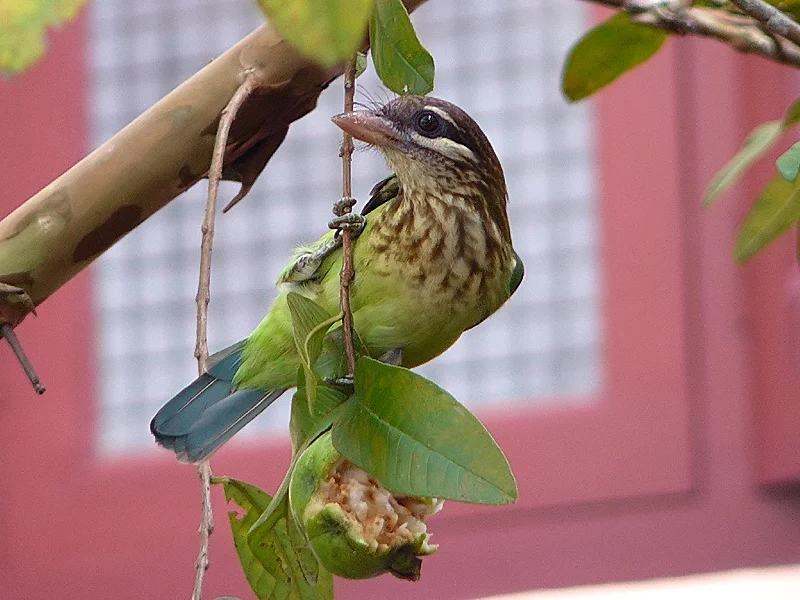
Image attribution: “White-Cheeked Barbet” by Sandeep Gangadharan is licensed under CC BY 2.0
Residents of Kerala are doubtlessly familiar with White-cheeked Barbets—even if they do not realize it. Although these creatures are rather easy to see, their incessant “kuturk” calls can be heard throughout much of the day. White-cheeked Barbets have been reported on 41.66% of all Kerala eBird checklists.
White-cheeked Barbets don’t need much to flourish. If a habitat has a small amount of tree cover, this is often plenty for these birds of Kerala. Thus, backyards, gardens, parks, woodlots, and forests will host White-cheeked Barbets.
Males and females are sexually monomorphic. Although India is home to several barbet species, these green birds in India are distinct with their white eyebrows and white cheek patches.
Common Myna
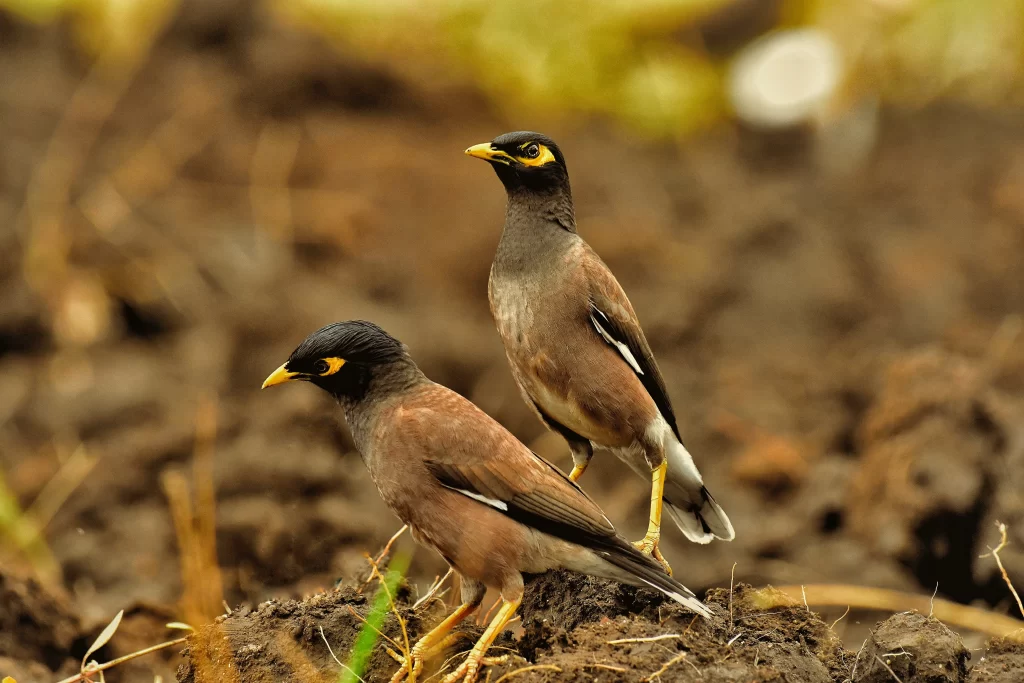
All Indians are certainly familiar with Common Mynas, as these birds are the most common bird in the country. Although they are the most frequently observed bird in India, they are the third-most frequently observed Kerala bird. Common Mynas are reported on 35,5% of eBird checklists in Kerala.
Although they aren’t the biggest, Common Mynas are easy to spot as they fly through the air and show their white wing patches. Moreover, they regularly form large, noisy flocks and fly around searching for food.
Those who have observed Common Mynas likely have noticed that these songbirds can be rather aggressive. This behavior has allowed them to prosper in Kerala and most of southern Asia. This Kerala bird will readily nest in cavities or birdhouses in backyards.
Brahminy Kite
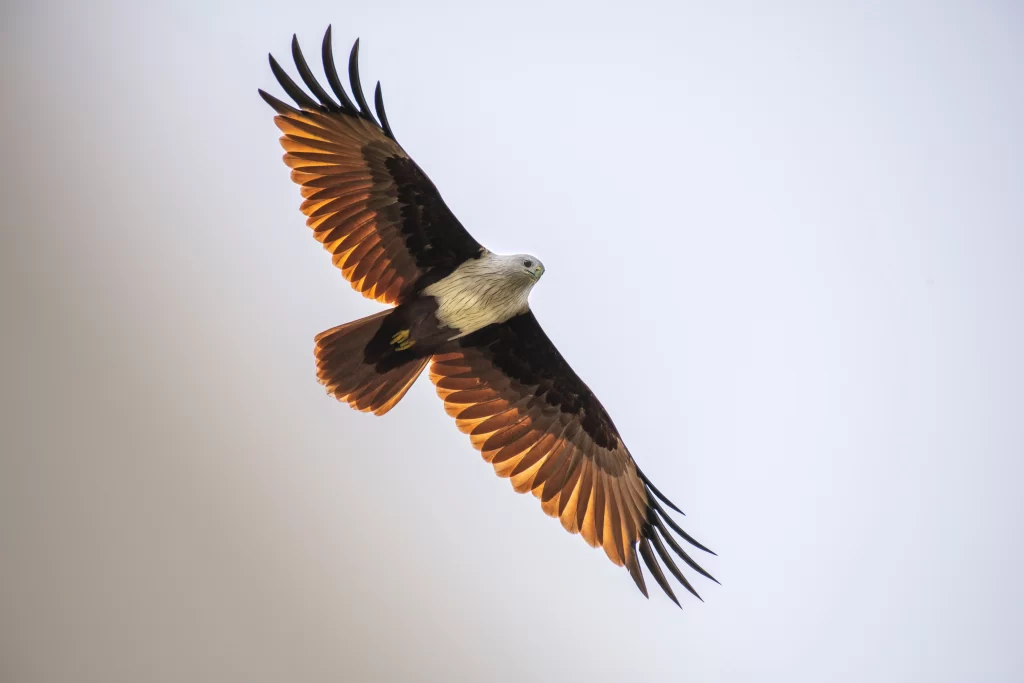
Brahminy Kites are gorgeous raptors, and Kerala is fortunate to call them their most numerous bird of prey. In fact, 31.47% of eBird checklists feature these kites. Now, this does not mean that Brahminy Kites are everywhere you look in Kerala. Rather, their seemingly abundant nature is a result of them being easy to identify as they soar through the air.
Mature Brahminy Kites are distinct with their white heads and chests and brown bodies. Immature birds feature the same two-toned wings as adults. However, their bodies are mottled brown and gray, meaning identification is not quite as straightforward.
Brahminy Kites are most often found around marshes and wetlands, which explains why they are seen so frequently in Kerala. These raptors in India are not fierce predators like some of their counterparts. Instead, they typically scavenge food such as dead fish, roadkill, or other carrion. Some birds have been known to consume food that humans leave out as an offering.
White-throated Kingfisher
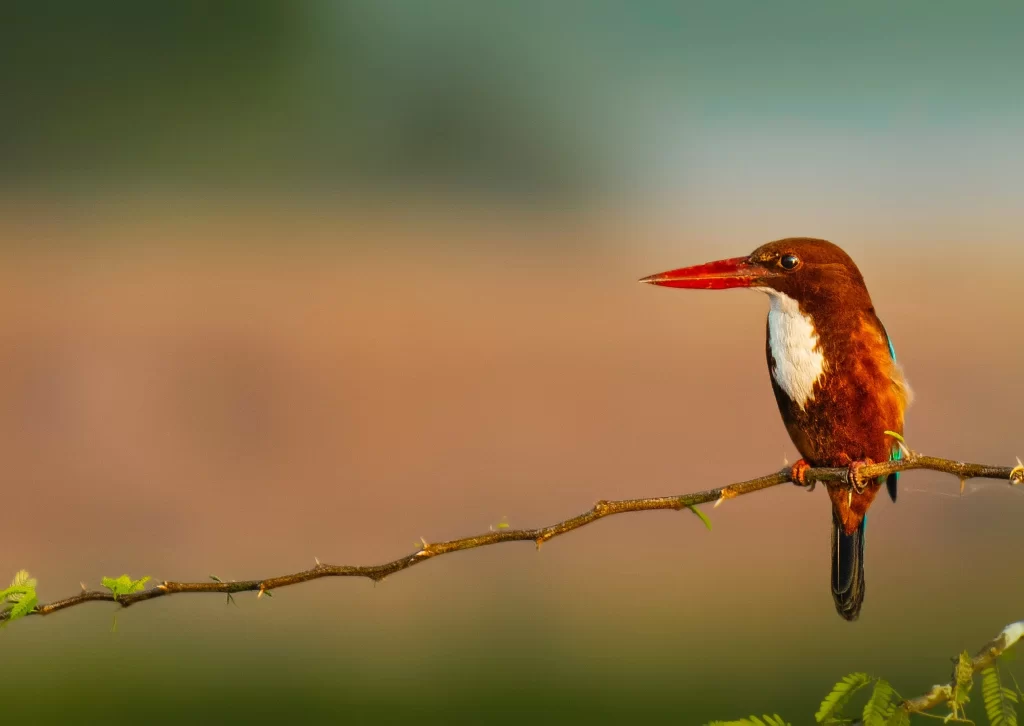
White-throated Kingfishers are birds commonly found in Kerala. Indeed, these birds of Kerala appear to have heads and bills that are much too large for their bodies. Nevertheless, they have managed to thrive with such features, as they are reported on 30.47% of all Kerala eBird checklists.
Unsurprisingly, White-throated Kingfishers may be found near a variety of aquatic habitats. Marshes, creeks, rivers, lakes, and ponds are good places to search for them. Here, this bird of Kerala may be observed sitting on a perch such as a branch of telephone wire as they watch for fish.
White-throated Kingfishers utter a slightly descending, rapid call. This sound is familiar to many who live near water in Kerala, and it may be given by flying or perched birds.
Large-billed Crow
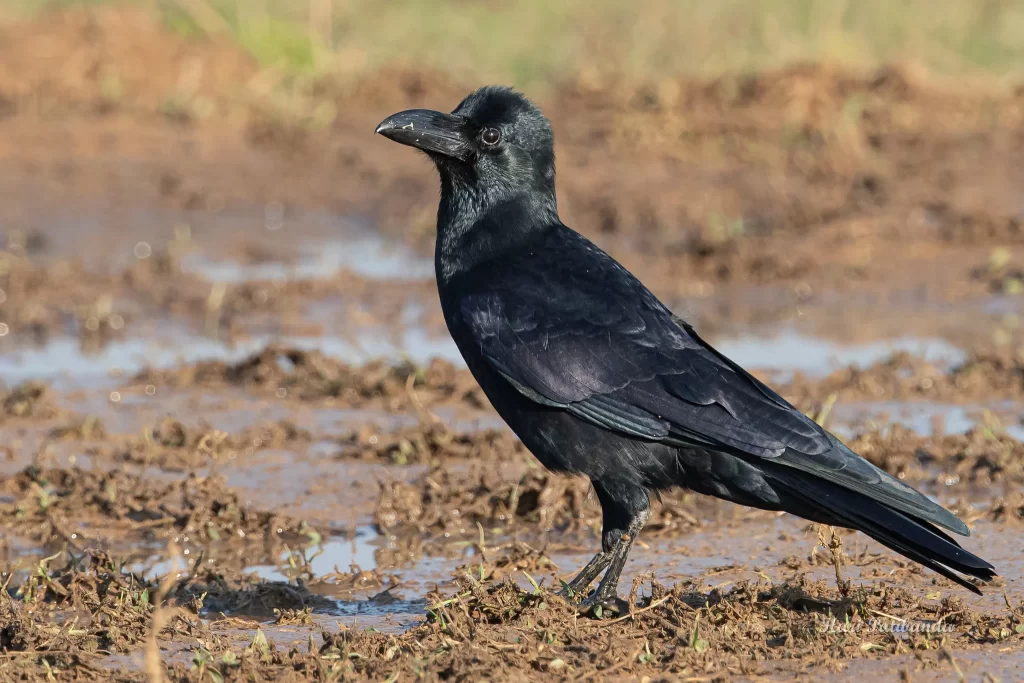
Image attribution: “A Large Billed Crow looking for insects in the ground” by Hari K Patibanda is licensed under CC BY 2.0
Although the Large-billed Crow loses the title of most common corvid in Kerala to the House Crow, they are certainly common sights in the state. Indeed, these crows are observed on 29.12% of all eBird checklists in Kerala.
Large-billed Crows are decidedly larger than their House Crow counterparts. Not only are their bills bigger, but they tend to be several inches larger, too. Even without these differences in size, there is no reason to confuse the two crows, as Large-billed Crows are entirely black like most other crows.
They can succeed in urban environments much like House Crows, but they do not tend to do quite as well in these habitats. However, these common birds of Kerala are more apt to thrive in rural environments compared to House Crows. Kerala is on the western edge of their range which extends east to the Philippines.
Greater Coucal
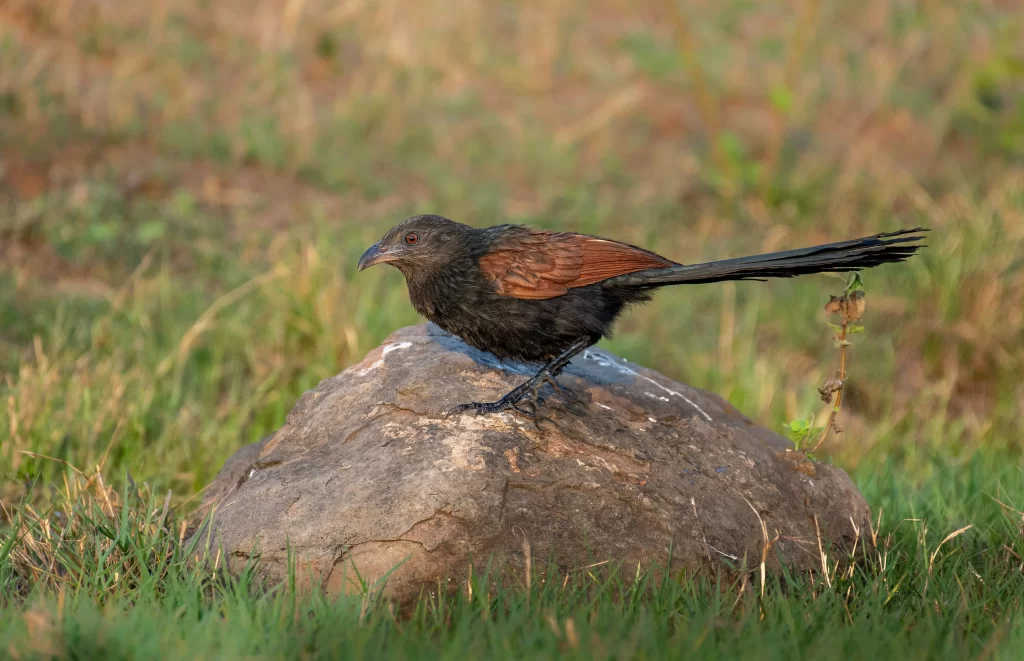
Greater Coucals are intriguing birds that are readily observed in Kerala. If a crow, cuckoo, and pheasant somehow managed to produce offspring, the spawn would look much like a Greater Coucal. Luckily, those who visit Kerala have a good chance of seeing one of these birds, as they are observed on 28.64% of all checklists.
Greater Coucals are found in a variety of open to fairly open habitats. They can—therefore–be found across most of Kerala save for thick tracts of rainforest. You may see this Kerala bird perched in trees or walking along the ground.
Their deep “oop” calls are easy to overlook since they are not piercing or otherwise notable. However, those with keen ears won’t miss them.
Indian Pond-Heron
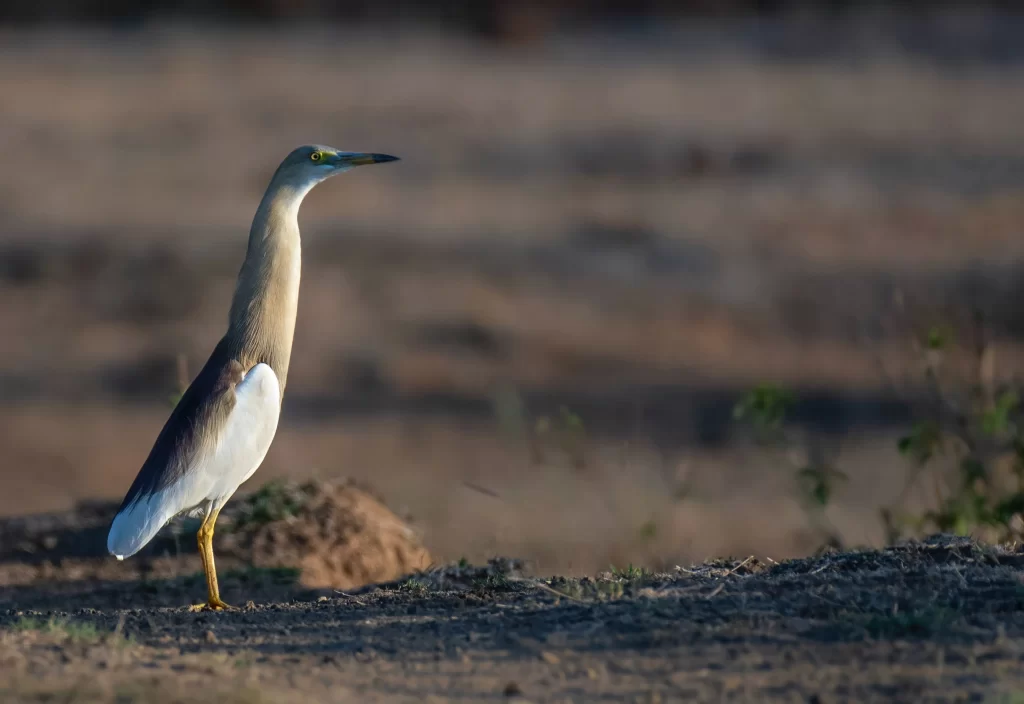
Indian Pond-Herons are regulars along waterways and marshes across Kerala. Although they aren’t the biggest herons, they are the most common in Kerala, being observed on 27.99% of eBird checklists in this region.
Adults in breeding plumage stand out with their burnt marshmallow-colored feathers. In flight, they appear to have a dazzling white color since their wings and tails and entirely white. Males and females are sexually monomorphic, and they morph into nonbreeding plumage after the breeding season.
Birds often nest in loose colonies. During dry seasons, they may forage in areas with short grasses such as lawns.
Rock Pigeon
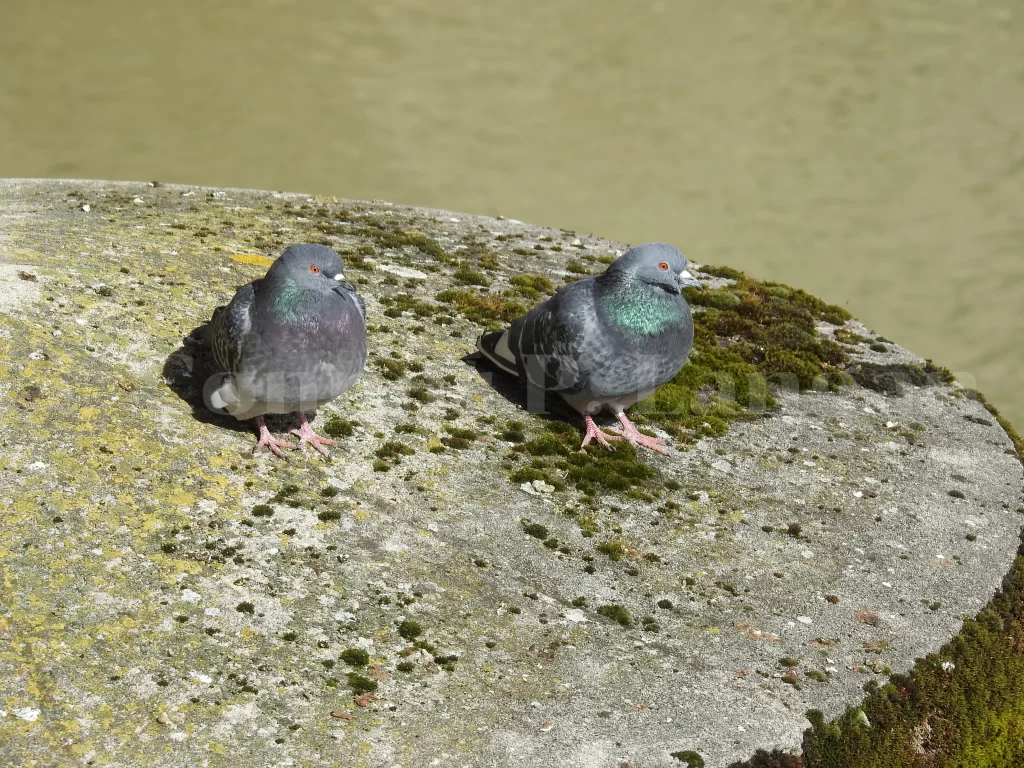
Rock Pigeons are ubiquitous throughout much of the world, so it’s no wonder that they’re reported on 27.91% of checklists in Kerala. These doves have adapted remarkably well to urban environments, flourishing in cities.
Rock Pigeons are not difficult to find. Indeed, a walk through a busy city will demonstrate that they are likely the most frequently seen birds. They may be found perched on buildings, along bridges, or in rail yards. Moreover, they frequently forage along the ground as they readily feed on roadways or sidewalks.
Rock Pigeons are social birds – where there’s one pigeon, there will often be dozens more nearby. They may be the most familiar bird to someone who lives in one of Kerala’s bigger cities.
Asian Koel
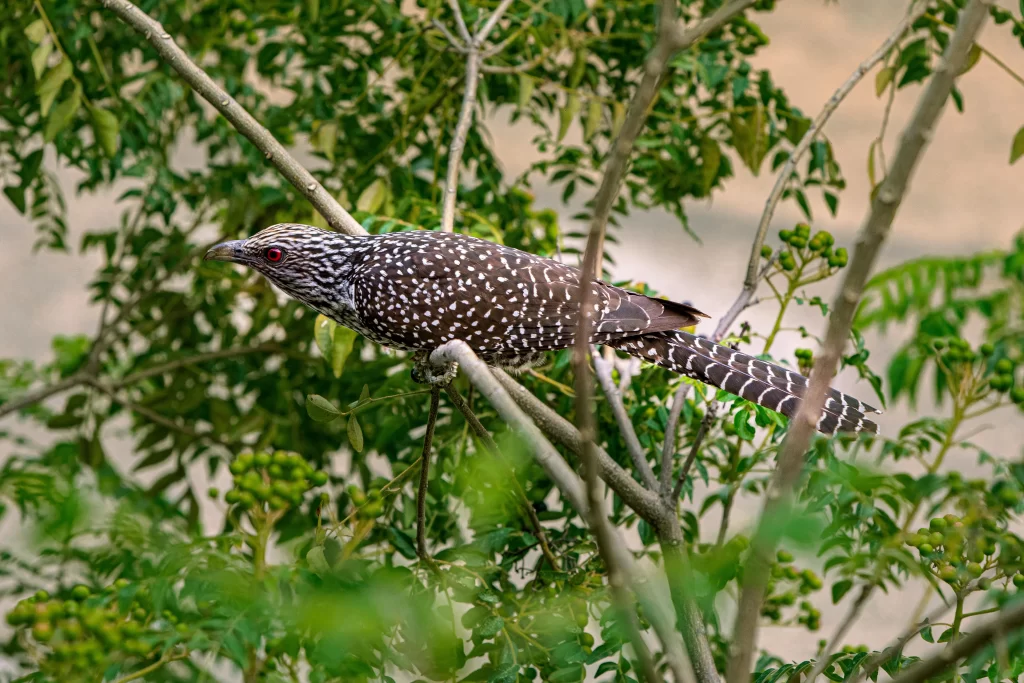
Asian Koels are large, sexually dimorphic cuckoos that may be found in thick forests. Males are somewhat reminiscent of corvids with their glossy black plumage, but females are quite different with their barred brown and gray coloration.
Asian Koels are observed on 27.48% of Kerala eBird checklists, making them the 10th-most common bird in the state. Like other cuckoos, Asian Koels are brood parasites, meaning they lay their eggs in the nests of other birds. Crows and similar large birds are often the victims of this trickery.
Although Asian Koels are rather secretive by nature, their namesake calls are hard to miss. Listen for a loud, abrupt “ko-el” vocalization to key you in on their presence.
Red-whiskered Bulbul
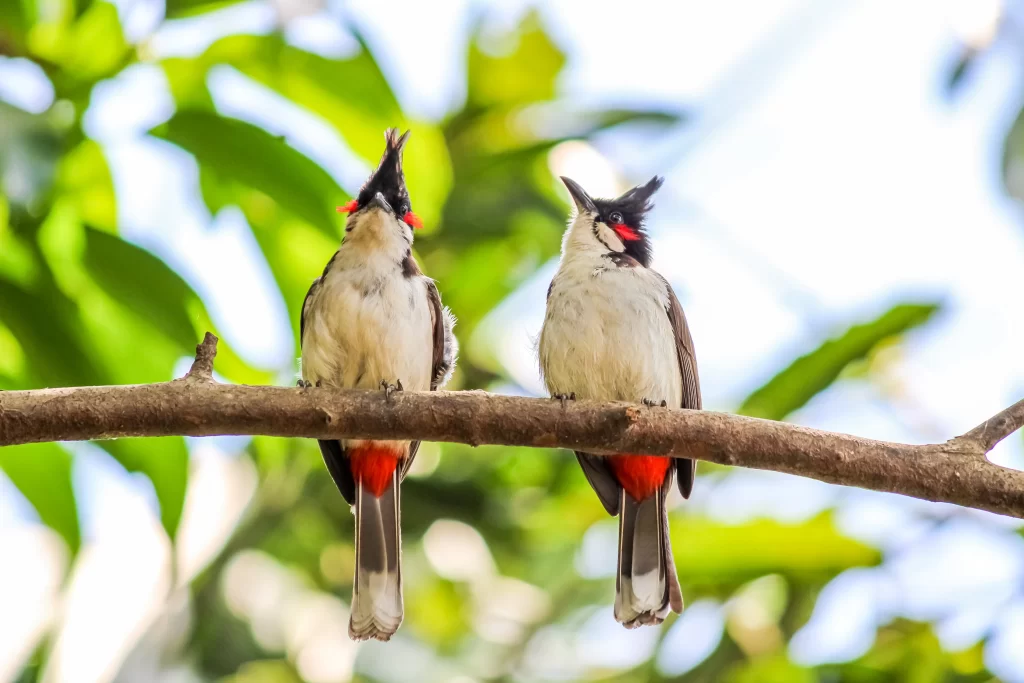
Red-whiskered Bulbuls are charming small birds in India. Many people—both birders and non-birders alike—have noted them thanks to their crested appearance and pleasant songs. Red-whiskered Bulbuls are reported on 27.29% of Kerala eBird checklists.
Although these Kerala common birds are certainly special, many have exploited the popularity and mannerisms of Red-whiskered Bulbuls by capturing these birds and selling them in the pet trade. This has been detrimental to wild populations of this species, and it has resulted in many introduced populations establishing themselves across the globe.
Look for this bird of Kerala in garden habitats, backyards, parks, and small woodlots. These sexually monomorphic animals are social, being commonly found in groups.
Oriental Magpie-Robin
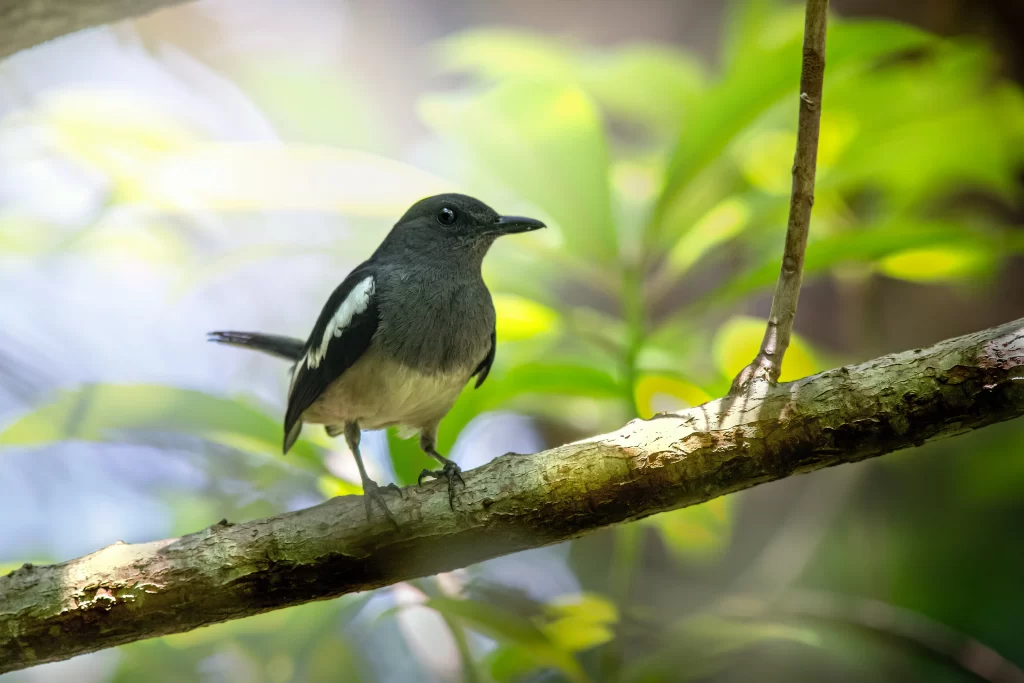
Oriental Magpie-Robins are sexually dimorphic, but both sexes are easy to discern with their bold white wing stripes, dark eyes, and long tails. They are observed on more than one-quarter of all Kerala checklists, being found on 25.29% of birding outings.
Oriental Magpie-Robins are common birds in Kerala and familiar to many thanks to their tendency to hang out in small woodlands, gardens, and parks. Moreover, males often sing from obvious perches, making them easy to detect.
This species sings a song that consists of a series of whistles and chirps, however, they are also able to mimic a variety of other bird species.
Rufous Treepie
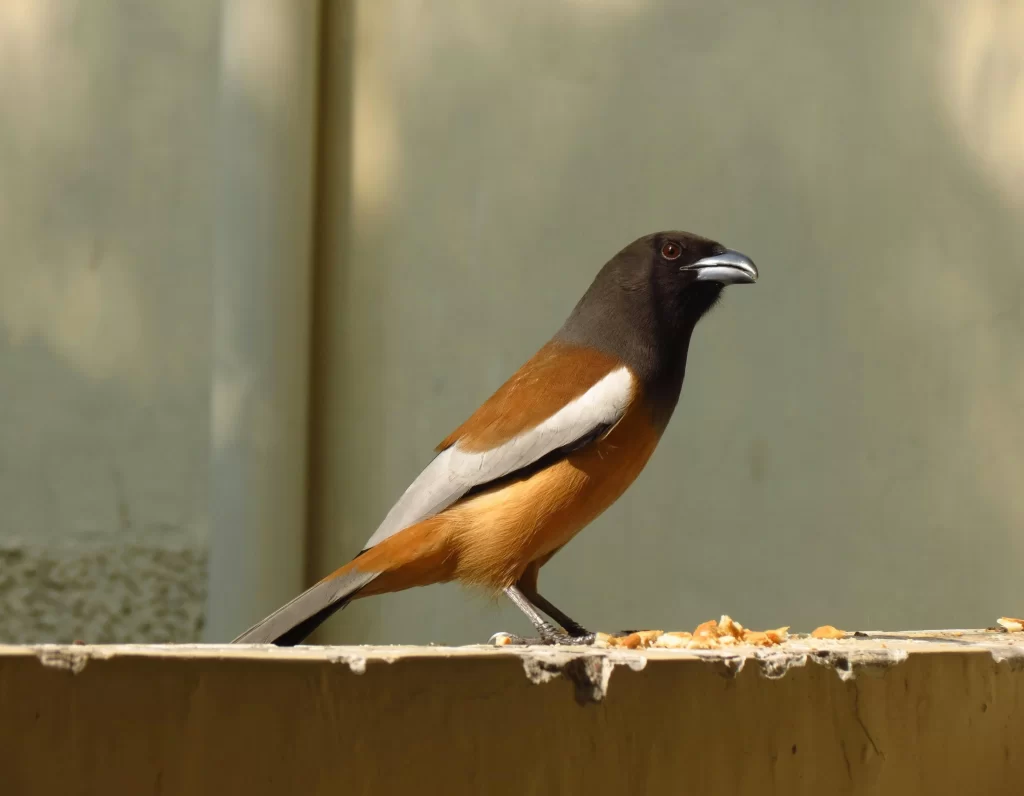
Rufous Treepies are intriguing corvids that are not too dissimilar to Holarctic magpies. These sexually monomorphic birds are found on 24.58% of Kerala eBird lists, as they are distinct in their appearance and song.
The vocalizations that they utter sound like typical magpie chatter. Rufous Treepies eat a varied diet that includes small animals, fruits, seeds, and plant matter.
As their names suggest, these birds found in Kerala spend most of their time in trees. More specifically, much of their foraging is done in the tree canopy, but they may forage much lower. Look for Rufous Treepies in parks, woodlots, forests, and scrubby habitats.
Black Drongo
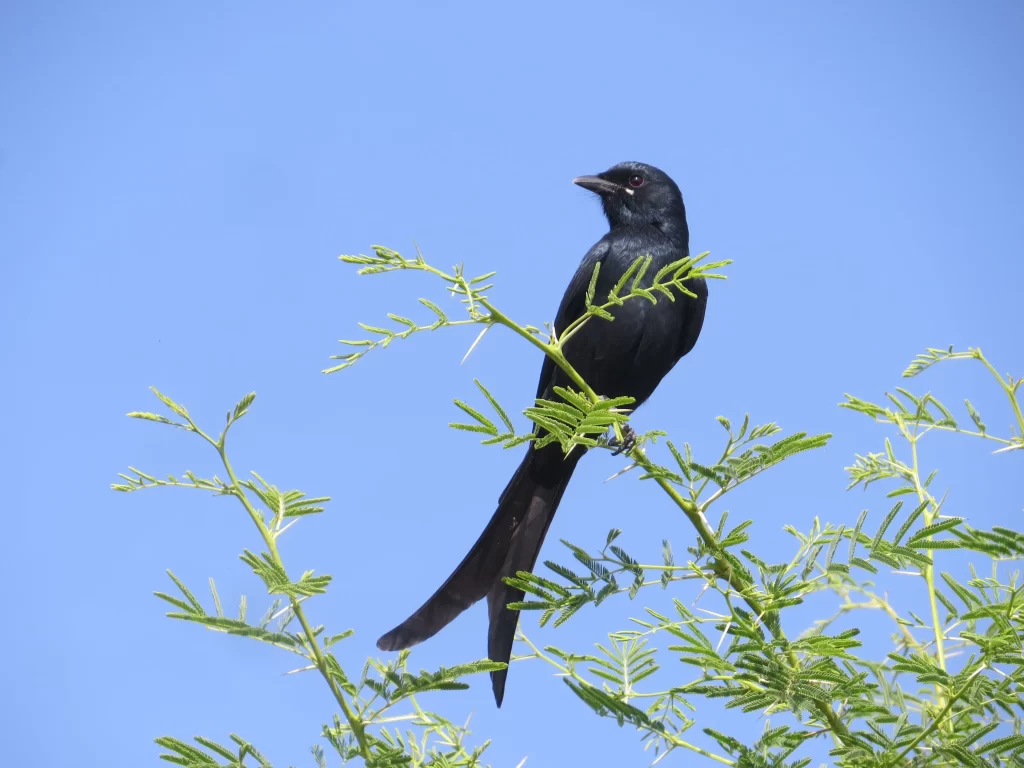
Black Drongo are sexually monomorphic songbirds with captivating black, glossy plumage and stunning long, forked tails. Fortunately, Kerala is a wonderful place for this species, as it is found on 24.51% of eBird checklists.
Black Drongos have a habitat of perching in obvious locations, so look for them on wires, treetops, or fences. They have an impression vocal repertoire, being able to mimic other species and offer plenty of their own calls and notes.
Look for Black Drongos in agricultural land, parks, scrubby areas, edges of forests, and wetlands. They are bold for their size, and they readily chase after many of Kerala’s raptors when they get too close.
Common Tailorbird
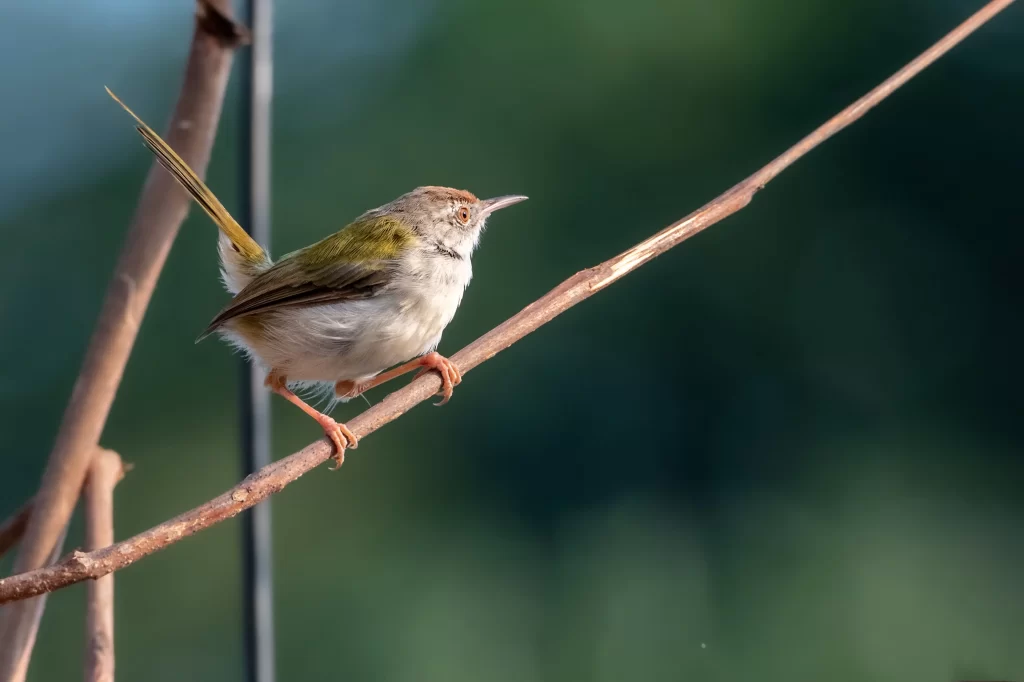
Common Tailorbirds are small birds in Kerala that are sexually monomorphic. They are rather subtle, and it can be difficult to see them as they blend in among the leaves of trees. Luckily, their monotonous call—which sounds similar to the notes uttered by Northern Cardinals–gives their presence away.
Common Tailorbirds are observed on 24.5% of Kerala eBird checklists. This species meticulously weaves together leaves to construct its nest, and it is for this reason that it has earned its name. Although they need tree cover to thrive, they can get by with very little. Therefore, parks, gardens, and other small tree plantings are plenty for this species.
Purple-rumped Sunbird
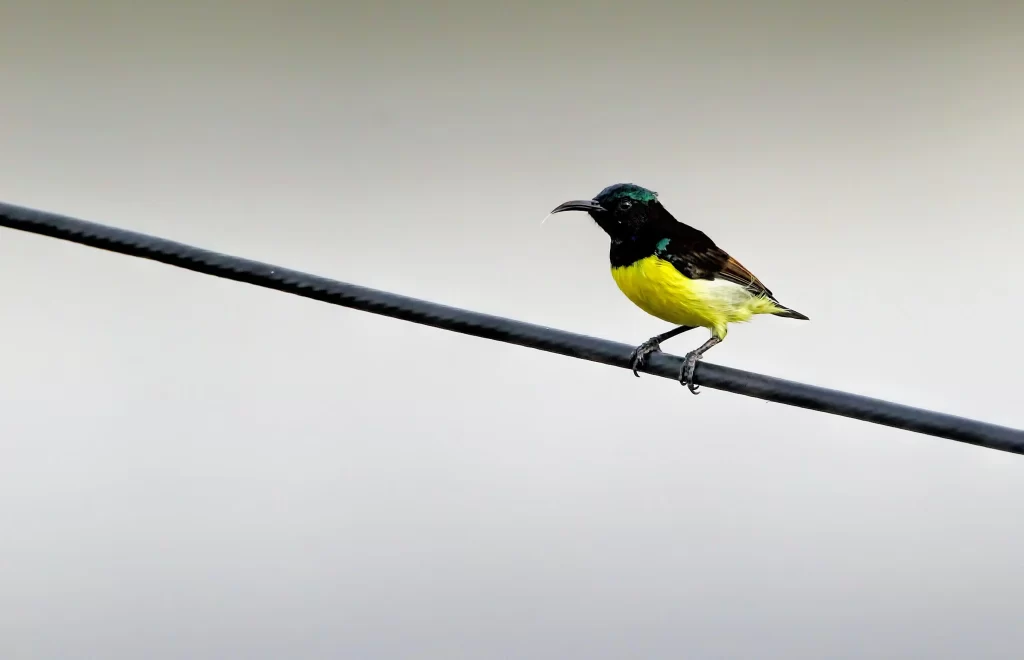
These beautiful birds in India are thankfully quite easy to find in Kerala, as Purple-rumped Sunbirds are detected on 23.82% of eBird lists. They are sexually dimorphic, but both males and females have gorgeous plumage that features yellow undersides.
Purple-rumped Sunbirds are active creatures, as they always seem to be constantly foraging as they search for flowers from which to sip nectar or consume insects. Unsurprisingly, these small birds in Kerala love gardens thanks to the numerous flowers that are typically present in these habitats.
When they’re not in gardens, look for Purple-rumped Sunbirds in woodlots, parks, and small tracts of forest. Their songs include many squeaky notes.
6 Beautiful Birds In Kerala
Those who visit Kerala for the first time may be content to observe many of the common birds in Kerala. However, some birders have loftier aspirations when visiting this state. Fortunately, Kerala is also home to an assortment of birds that are both beautiful and uncommon. This next section will discuss several bird species that photographers and birders alike will adore.
Malabar Grey Hornbill
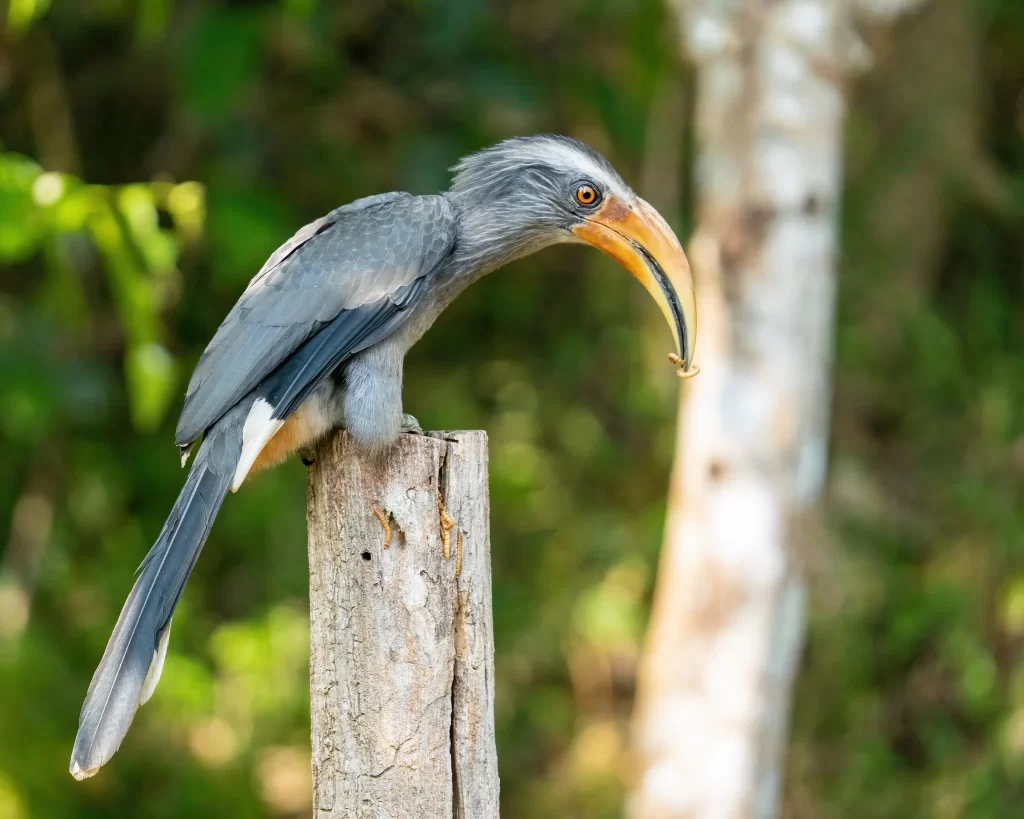
Image attribution: “Malabar grey hornbill male” by Kandukuru Nagarjun is licensed under CC BY 2.0
Malabar Grey Hornbills call the Western Ghat Mountain Range home. These Kerala birds are found nowhere else, and since much of this mountain range extends through Kerala, the state is a terrific place to find this species.
Those who travel to dense, lush rainforests within the Western Ghats will have a decent chance of observing a Malabar Grey Hornbill. In fact, these sizable birds are observed on 4.01% of all Kerala checklists. While they are fairly regular in the state, they are listed as vulnerable by the International Union for Conservation of Nature and Natural Resources (IUCN) due to their restricted range and negative population trends.
Although they are big, it is not always easy to spot a Malabar Grey Hornbill since they rarely leave the cover of dense trees. Luckily, their high-pitched squawks often give away their presence.
Great Hornbill
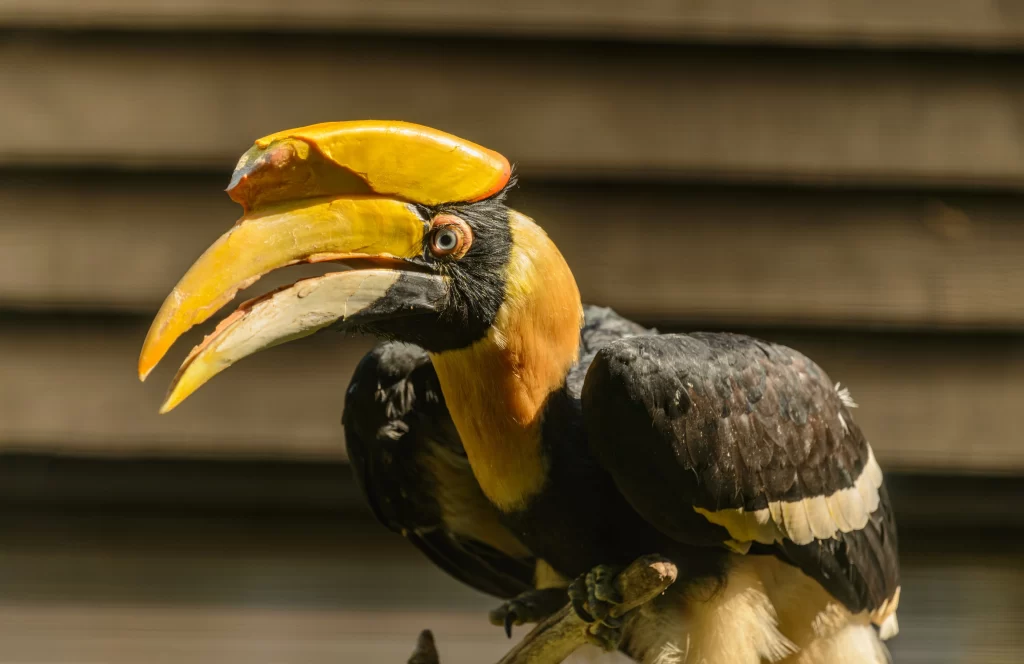
Great Hornbills are renowned throughout Kerala, in fact, they’re so respected here that they have been designated the state bird of Kerala. Therefore, although Great Hornbills are perhaps the most familiar of the different types of birds in Kerala, few have actually observed one, as they’re only detected on 0.477% of Kerala eBird checklists.
The scarcity of Great Hornbills means that they’re also a treat when they’re observed in the state. Those who wish to get a look at one of these massive Kerala birds should travel to large, contiguous forest reserves where they readily feed on fruits and seeds in tree canopies.
All Great Hornbill sightings are hidden from public view on birding sites such as eBird as a means of protecting this special state bird of Kerala. Therefore, if you are lucky enough to see one of these rare birds in India, be sure to keep the exact location a secret to protect this species from poachers or those hoping to make one of these wild birds into a pet.
Yellow-browed Bulbul
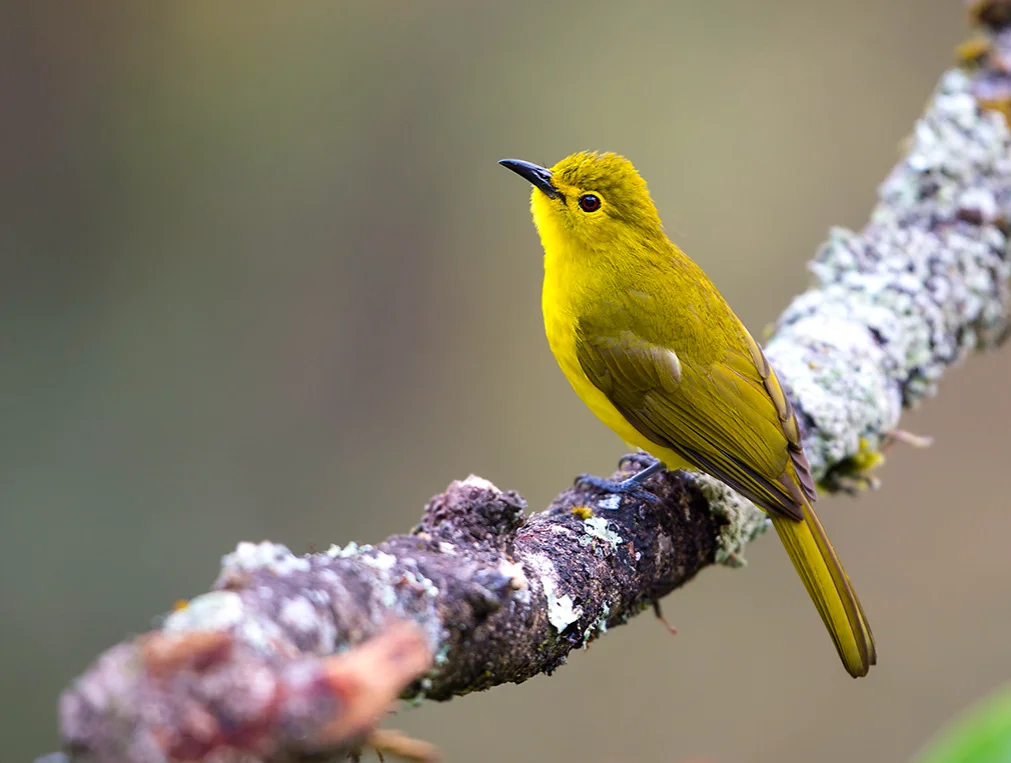
Image attribution: “Yellow-browed Bulbul” by Koshy Koshy is licensed under CC BY 2.0
Yellow-browed Bulbuls are a stunning species of electric-yellow songbird that some say is one of the most beautiful birds in India. While they’re not as common as their Red-whiskered Bulbul counterparts, these yellow and green birds in Kerala are still reported on 5.93% of Kerala eBird checklists.
This gorgeous, sexually monomorphic songbird is rather social, often being found with conspecifics or mixed groups of other bird species. Yellow-browed Bulbuls are found in decent-sized tracts of forest where they forage at many different levels of the canopy.
If you can’t seem to pick out a Yellow-browed Bulbul among those similarly-colored leaves, try listening for its song: a series of seemingly random whistles and rising notes.
Nilgiri Flycatcher
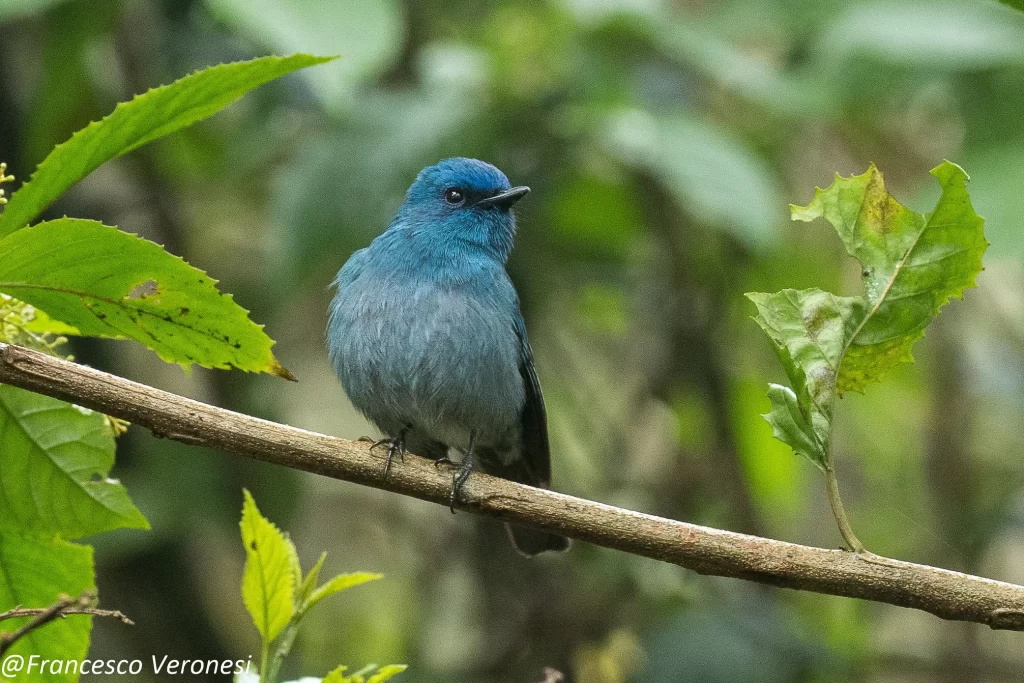
Image attribution: “Nilgiri Flycatcher – Munnar – Kerala” by Francesco Veronesi is licensed under CC BY-SA 2.0
Nilgiri Flycatchers are attractive birds found in Kerala that are unquestionably beautiful. Males are stunning with their deep blue bodies, while females are more subtle with their largely gray colors. You may think that Nilgiri Flycatchers would catch the eyes of birders, but they keep a low profile, only being observed on 0.612% of Kerala eBird checklists.
Nilgiri Flycatchers are associated with forested habitats, but they are not regularly found in forest interiors. Instead, look for them in semi-open forests on hills and the edges of thick forests.
If you can’t spot one of these small birds in Kerala, try listening for the song of males that consists of up and down slurred, whistle-like notes.
Malabar Parakeet
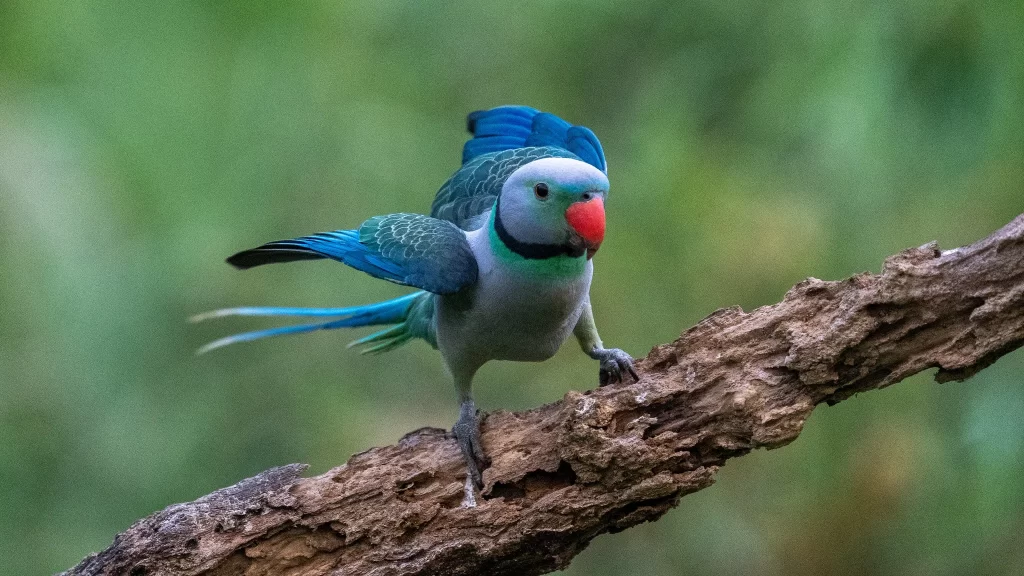
Image attribution: “Male Malabar Parakeet” by Kandukuru Nagarjun is licensed under CC BY 2.0
Malabar Parakeets are a sight to behold with their exceptionally long tails and breathtaking colors. These Kerala birds are sexually dimorphic with males having red bills, azure bodies, and blue tails. Females are also quite attractive, with dark green wings, pale green undersides, and dark bills. Both sexes have blue wings, giving them their nickname – blue-winged parakeet.
Fortunately for birders in Kerala, Malabar Parakeets are fairly easy to find, as they occur on 3.78% of eBird checklists in Kerala. Like all of the other beautiful Kerala birds on this list, Malabar Parakeets are found within forests or the edges of tracts of trees.
Malabar Parakeets give vocalizations that are similar to those uttered by other parakeets. Therefore, listen for high-pitched squawks and squeals.
Dollarbird
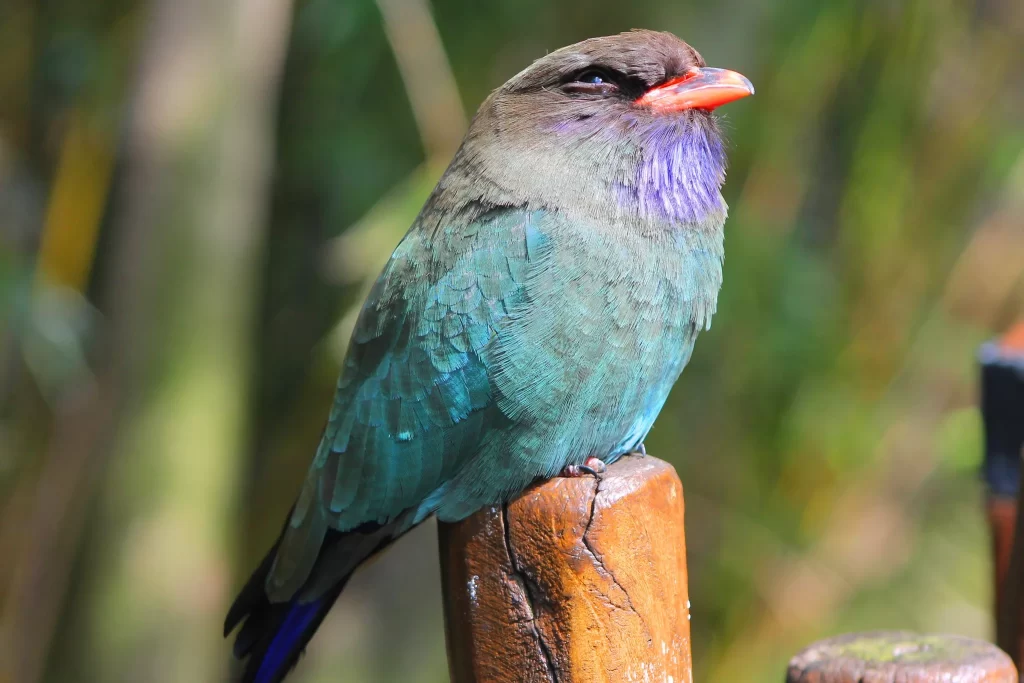
Image attribution: “Toranga Zoo – Dollarbird” by Mertie . is licensed under CC BY 2.0
Dollarbirds are handsome sexually monomorphic birds with big heads and study bodies. They’ve got red bills, indigo throats, azure wings, and blue-gray bodies. These gorgeous songbirds are found on 0.472% of Kerala eBird checklists, making them the rarest birds listed in this list of Kerala birds.
These birds owe their name to the fact that white circles on visible on their wings in flight. These white circles resemble dollars, and thus, they earn the name Dollarbird. They nest in tree cavities and frequently perch in obvious perches like snags or wires.
Chatter-like, dry vocalizations are given by Dollarbirds. You may find them within forests that are not especially dense.

